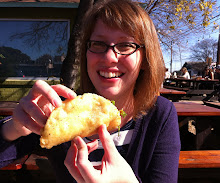This is a picture of the one normal-looking cookie that came out of a batch of flourless double-chocolate pecan cookies I baked today.
The others either crumbled to pieces because I tried prying them from the baking sheet too early or spread to enormous proportions and grew corners until they resembled Midwestern states. Like this:
 |
| Pictured with a coaster to show their overgrown size. |
No big deal. The cookies — all of which are now in pieces because they were too big to fit into a lidded container — taste just fine. I'm not sure what factor kept my batter so thin and caused the cookies to sprawl; it certainly wasn't as scoopable as it appeared in the Everyday Food video that persuaded me to bake these cookies. Could be the heat, of course. It's what I'm blaming for all my woes of late, especially missing a Jonathan Richman concert on Friday after getting somewhat dehydrated. I've learned my lesson once and for all that two beers and zero water while eating dinner outside is not the way to go.
Anyway, things are better now that I'm drinking water and eating these cookies. Because they're flourless and the only wet ingredient is egg whites, they bear a bit of that shiny, crackly look that signals a delicate, macaron-like chew. It's possible that the chocolate is supposed to melt throughout the cookie — more likely if you chop your chocolate instead of using lazy chips like I did — but I have no problem with pockets of chocolate instead.
 |
| Looking lacy. |
Flourless double-chocolate pecan cookies
From marthastewart.com
Makes 12
3 cups confectioners' sugar
3/4 cup Dutch-process cocoa powder (spooned and leveled)
1/2 teaspoon coarse salt
5 ounces bittersweet chocolate, chopped
1 1/2 cups chopped pecans (or other type of nut)
4 large egg whites, room temperature
Preheat oven to 325 degrees. In a large bowl, whisk together sugar, cocoa, and salt. Stir in chocolate and pecans. Add egg whites and stir just until incorporated (do not overmix).
Drop dough by 1/4 cupfuls, 3 inches apart, onto two parchment-lined rimmed baking sheets. Bake until cookie tops are dry and crackled, about 25 minutes, rotating sheets halfway through. Transfer sheets to wire racks and let cookies cool completely. (To store, keep in an airtight container, up to 3 days.)















